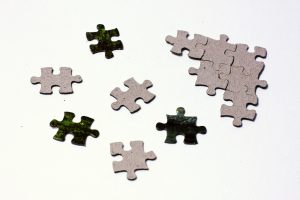Creating Openly Licensed Content
Key takeaways from this chapter:
Keep the following in mind when creating an OER that you intend to license under Creative Commons:
- You can combine Creative Commons materials licensed under different terms if the pre-existing materials licenses are compatible and continued in the new work.
- You can use copyrighted material in a work licensed under Creative Commons if you received permission from the author or your use of the material falls under an exception to copyright.
For a more in-depth explanation of these topics, please continue reading.
Combining materials under different licenses

Whether or not you can combine materials under different licenses depends on whether your work is a new creation or an adaptation. If combining the materials does not create an adaptation, you can combine the materials, provided you follow the attribution restriction and apply the non-commercial restriction.
If your combination creates an adaptation, which is defined as a work based on one or more pre-existing works, the licenses must be compatible. Additionally, because the original license continues to apply to the material, the terms you can license your adaptation under will depend on what terms the original material was licensed under.
Fortunately, Creative Commons has created a license compatibility chart under the Can I combine material under different Creative Commons licenses in my work? section of their FAQ page. The site also has a guide to selecting an adapter’s license for your new creations under the If I derive or adapt material offered under a Creative Commons license, which CC license(s) can I use? section of the FAQ page.
Using Copyrighted Material
If you have used copyrighted material under an exception to copyright or with permission from the author, you can apply a Creative Commons license to the finished work. However, the Creative Commons license only applies to the rights you have in the work. Therefore, you must mark the third party material you used so that others reusing the work know what work is licensed under Creative Commons. For more information, refer to the Creative Commons FAQ page. You can also visit the Creative Commons Wiki page Marking/Creators/Marking third party content to learn the best practices for labeling copyrighted content.
Previous Chapter I Next Chapter
Media Attributions
- Scattered puzzle pieces next to solved fragment © Horia Varlan is licensed under a CC BY (Attribution) license

